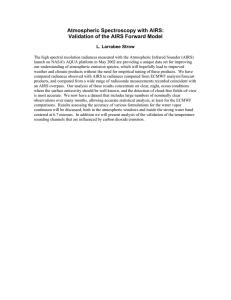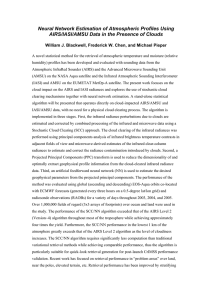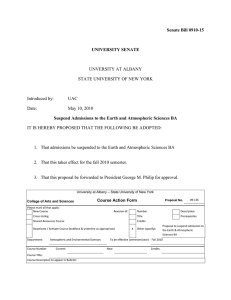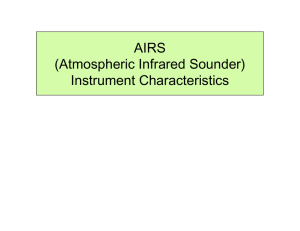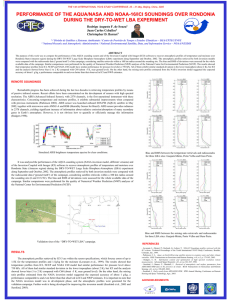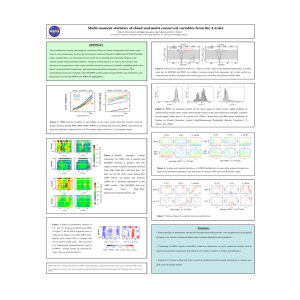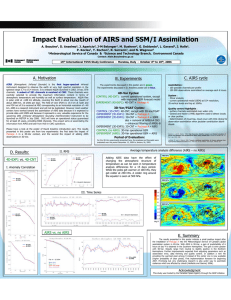AIRS in Atmospheric and Climate Research
advertisement
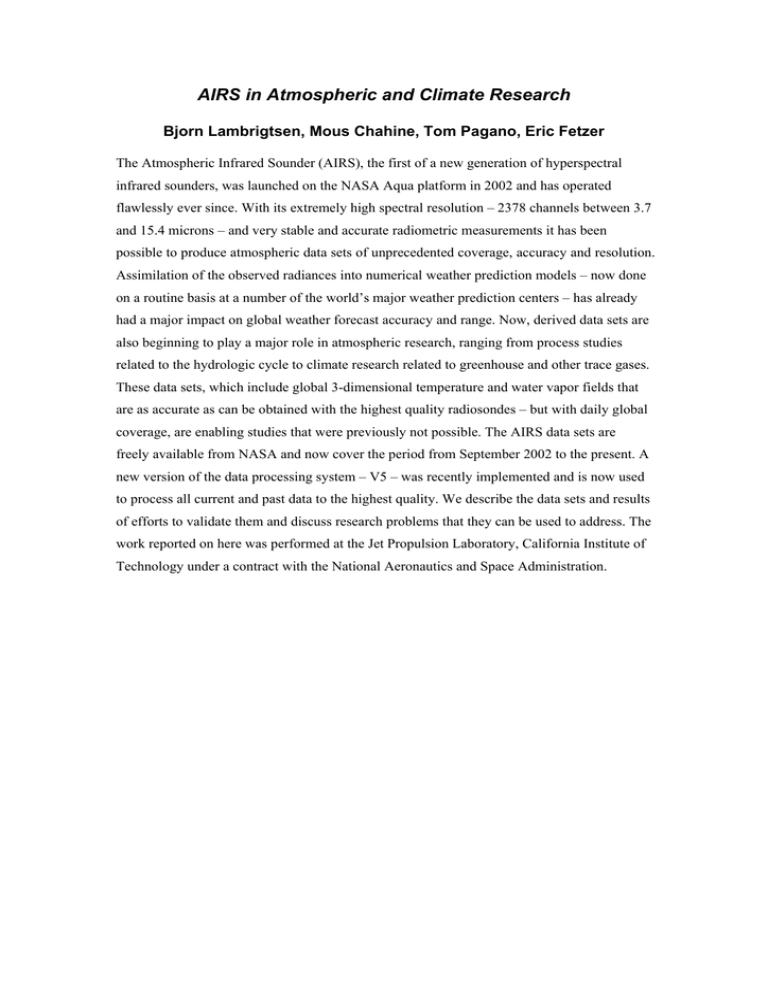
AIRS in Atmospheric and Climate Research Bjorn Lambrigtsen, Mous Chahine, Tom Pagano, Eric Fetzer The Atmospheric Infrared Sounder (AIRS), the first of a new generation of hyperspectral infrared sounders, was launched on the NASA Aqua platform in 2002 and has operated flawlessly ever since. With its extremely high spectral resolution – 2378 channels between 3.7 and 15.4 microns – and very stable and accurate radiometric measurements it has been possible to produce atmospheric data sets of unprecedented coverage, accuracy and resolution. Assimilation of the observed radiances into numerical weather prediction models – now done on a routine basis at a number of the world’s major weather prediction centers – has already had a major impact on global weather forecast accuracy and range. Now, derived data sets are also beginning to play a major role in atmospheric research, ranging from process studies related to the hydrologic cycle to climate research related to greenhouse and other trace gases. These data sets, which include global 3-dimensional temperature and water vapor fields that are as accurate as can be obtained with the highest quality radiosondes – but with daily global coverage, are enabling studies that were previously not possible. The AIRS data sets are freely available from NASA and now cover the period from September 2002 to the present. A new version of the data processing system – V5 – was recently implemented and is now used to process all current and past data to the highest quality. We describe the data sets and results of efforts to validate them and discuss research problems that they can be used to address. The work reported on here was performed at the Jet Propulsion Laboratory, California Institute of Technology under a contract with the National Aeronautics and Space Administration.
